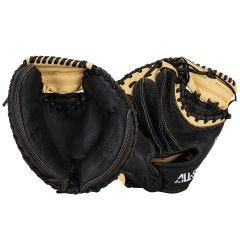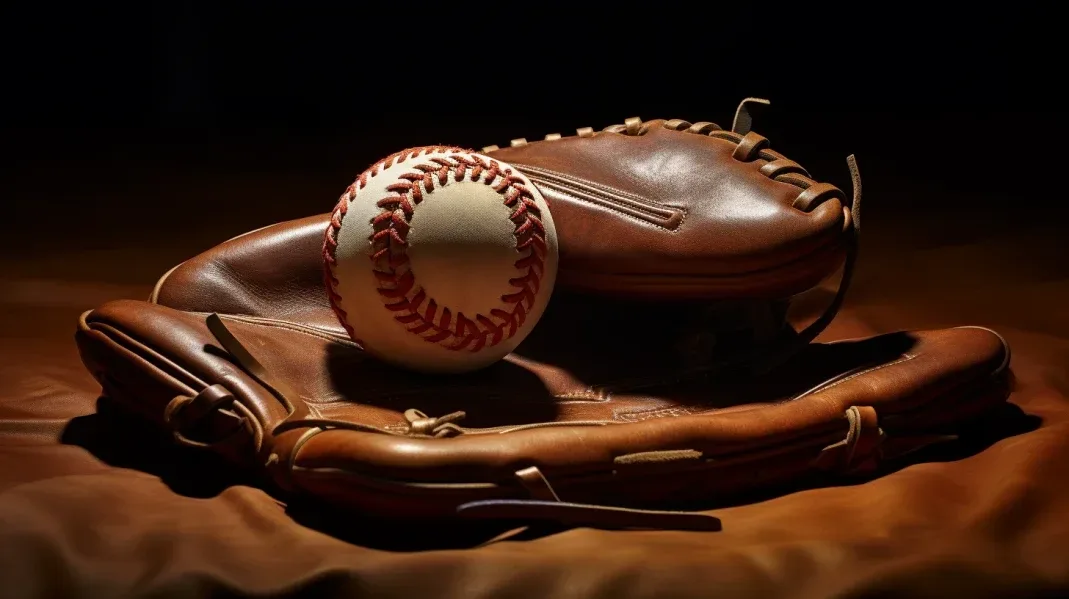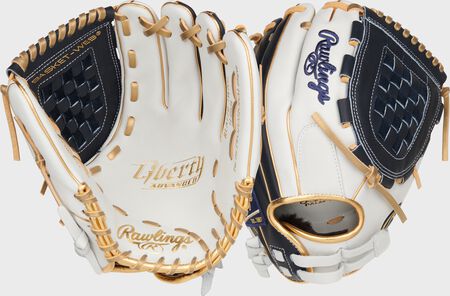
About Me
Get the Competitive Edge With These High-Quality Baseball Gloves
To get a competitive edge, invest in high-quality baseball gloves customized to your position. Professional-grade gloves offer superior leather quality and performance, with brands like Wilson, Rawlings, and Mizuno leading the pack. Infield gloves (11.25" to 11.75") feature shallow pockets for quick transfers, while outfield gloves (12.5" to 13") have deeper pockets for secure catches (Youth baseball gloves for beginners). Youth players should focus on proper fit, with sizes ranging from 9" to 12". Pitchers benefit from specialized gloves with closed webbing and extra padding. Remember, a well-broken-in glove can improve your performance by up to 15%. Dive deeper to reveal the full potential of your game-changing gear
Key Takeaways
- Professional-grade gloves from top brands like Wilson, Rawlings, and Mizuno offer superior performance and durability.
- Choose gloves with full-grain leather for optimal strength, hand fit, and long-term flexibility.
 Explore ActiveGearAdvisor.com
Explore ActiveGearAdvisor.com- Select position-specific gloves, such as shallow-pocketed infield gloves or deep-pocketed outfield gloves, for enhanced performance.
- Properly break in your glove using methods like play catch or malleting to improve control and comfort.
- Regularly condition your glove with high-quality products to maintain suppleness and extend its lifespan.
Top Professional-Grade Baseball Gloves
Crafted with precision and designed for peak performance, professional-grade baseball gloves represent the pinnacle of fielding equipment. These gloves offer superior leather quality, ensuring durability and ideal feel. Youth baseball gloves for beginners. Top glove brands like Wilson, Rawlings, and Mizuno consistently deliver products that meet the exacting standards of professional players
When selecting a pro-grade glove, you'll want to take into account factors such as leather type (Youth baseball gloves for beginners), web design, and pocket depth. Full-grain leather, known for its strength and ability to form to your hand, is the preferred choice for many professionals (Active Gear Advisor baseball gloves). You'll find various web styles, each suited to different positions and playing styles. Closed webs offer more stability for outfielders, while open webs allow infielders quicker ball transfer
Pay attention to the glove's break-in period and padding. A well-padded glove provides protection against hard-hit balls, reducing the risk of injury (Youth baseball gloves for beginners). Remember, while these gloves offer exceptional performance, they often require a longer break-in time to achieve ideal flexibility and comfort. Investing in a professional-grade glove can greatly enhance your fielding capabilities, giving you the competitive edge you're seeking
Infield Gloves for Quick Plays
Infield gloves are typically designed for lightning-fast plays and quick ball transfers. When selecting an infield glove, you'll want to prioritize models that offer a shallow pocket - How to select a baseball glove for pitching and a tight webbing pattern. These features allow for rapid ball extraction - Youth baseball gloves for beginners, vital for executing double plays or throwing out speedy runners
 How to select a baseball glove for pitching
How to select a baseball glove for pitchingTo maximize your infield performance, consider these key factors:
- Size: Opt for a smaller glove (11.25" to 11.75") for enhanced control and quicker shifts.
- Padding: Look for models with strategic padding to protect your hand during hard-hit grounders.
- Break-in period: Choose a glove that balances immediate playability with long-term durability.
Mastering proper fielding techniques - Youth baseball gloves for beginners is essential for infield success. Practice short-hop drills and backhand catches to improve your reaction time and versatility. Additionally, regular glove maintenance is vital for peak performance and longevity. Clean your glove after each use, condition the leather periodically, and store it properly to prevent warping
Outfield Gloves With Extended Reach
Nearly all outfield gloves are designed with extended reach in mind, typically ranging from 12.5" to 13" in length. This extra size allows you to cover more ground and snag those hard-to-reach fly balls. When choosing an outfield glove, consider models with deep pockets to securely hold onto catches at high speeds.
Top-quality outfield gloves often feature premium leather, such as steerhide or kipskin, for durability - Durable gloves for baseball pitching. Youth baseball gloves for beginners and improved ball control. These materials offer excellent longevity while maintaining the flexibility needed for outfield techniques like the basket catch. Some manufacturers incorporate lightweight synthetic materials in non-critical areas to reduce overall weight without compromising performance
Look for gloves with reinforced webbing between the thumb and index finger. This design enhances your ability to track and catch fly balls, especially in challenging sun conditions. Many outfield gloves also feature open web designs, allowing for quicker ball transfer during throws to the infield.
 Discover youth baseball gloves on Active Gear Advisor
Discover youth baseball gloves on Active Gear AdvisorWhen breaking in your new outfield glove, focus on creating a slight curve in the pocket to cradle fly balls effectively - Youth baseball gloves for beginners. This shape helps prevent pop-outs and increases your chances of securing difficult catches, giving you a competitive edge in the outfield
Youth Gloves for Developing Players
When selecting youth baseball gloves, you'll find that proper size and fit are essential for developing players' skills. You should prioritize gloves that allow young athletes to easily close and control the mitt, typically ranging from 9 to 12 inches depending on the player's age and position. Additionally, you'll want to take into account the glove's durability - Youth baseball gloves for beginners, as growing players may be rougher on equipment and require a mitt that can withstand frequent use during practices and games
Size and Fit Importance
Choosing the right size and fit for youth baseball gloves is essential for developing players. Proper glove measurements (Youth baseball gloves for beginners) and player position considerations are vital for enhancing performance and safety on the field. A well-fitted glove improves a young player's ability to catch, field, and transfer the ball efficiently
When selecting a youth baseball glove, consider these key factors: Youth baseball gloves for beginners. - How to select a baseball glove for pitching
- Hand size: Measure from the tip of the middle finger to the base of the palm
- Position-specific sizing: Infielders typically use smaller gloves, while outfielders require larger ones
- Pocket depth: Shallower pockets for infielders, deeper for outfielders
 ActiveGearAdvisor.com for baseball gloves
ActiveGearAdvisor.com for baseball glovesThe right size allows for better control. Youth baseball gloves for beginners and reduces the risk of hand injuries. A glove that's too large can impede a player's ability to close it quickly, while one that's too small may not provide adequate protection. As young players grow, it's important to reassess glove size regularly to maintain peak performance and safety
Durability for Young Athletes
Three key factors contribute to the durability of youth baseball gloves: material quality, construction techniques, and maintenance practices. When selecting a glove for a young athlete, prioritize high-grade leather options like full-grain or top-grain cowhide. These materials offer superior durability compared to synthetic alternatives, withstanding the rigors of frequent use and varying weather conditions.
Pay attention to reinforced stitching. Youth baseball gloves for beginners and webbing, as these construction elements markedly impact longevity. Double welting along the glove's edges provides additional structural integrity, reducing wear and tear during catches and fielding
Proper glove maintenance is essential for extending its lifespan. Teach young players to clean their gloves regularly, removing dirt and debris after each use. Apply a leather conditioner periodically to prevent drying and cracking. Store the glove in a cool, dry place to avoid moisture damage.
Consider investing in gloves with moisture-wicking linings to combat sweat accumulation, which can lead to premature deterioration. By focusing on material quality and implementing consistent maintenance practices, you'll guarantee your young athlete's glove remains game-ready - Best Pitching Gloves - Youth baseball gloves for beginners throughout their developmental years
Specialized Gloves for Pitchers
Pitchers require specialized gloves. Youth baseball gloves for beginners designed to enhance their performance and protect their throwing hand. When choosing a pitcher's glove, you'll find various custom glove options customized to your specific needs. These gloves often feature deeper pockets and closed webbing to conceal your grip from batters
Consider these key factors when selecting a pitcher's glove:
- Glove material types: Premium leather offers durability and feel, while synthetic materials provide lighter weight and quicker break-in.
- Web design: Closed webs help hide the ball, while modified trap webs offer a balance of concealment and flexibility.
- Padding: Extra palm padding reduces shock and protects your hand during high-velocity throws.
 How to select a baseball glove for pitching
How to select a baseball glove for pitchingYou'll want to prioritize a glove that allows for quick transfers and provides ample wrist protection. Many pitcher's gloves feature reinforced heel pads to absorb impact and prevent injury - Youth baseball gloves for beginners. Look for models with adjustable wrist straps to guarantee a secure fit during your windup and delivery
Breaking In Your New Glove
Once you've selected the perfect glove, it's time to focus on breaking it in for ideal performance. Proper glove conditioning techniques are essential for optimizing your glove's flexibility, shape, and pocket formation. Start by applying a high-quality glove conditioner to soften the leather and increase its pliability. Next, employ one of these breaking in methods:
| Method | Pros | Cons |
|---|---|---|
| Play catch | Natural break-in | Time-consuming |
| Malleting | Targeted shaping | Risk of over-softening |
| Steaming | Quick results | Potential leather damage |
| Oven heating | Uniform softening | Risk of overdrying |
| Overnight wrapping | Gentle shaping | Slow process |
Regardless of the method you choose, always prioritize safety. Avoid excessive heat or pressure that could compromise the glove's structural integrity. Focus on gradually working the leather, paying special attention to the pocket and hinge areas. Remember to regularly oil the glove during the break-in process to maintain its suppleness. Youth baseball gloves for beginners. By carefully following these steps, you'll create a well-formed, game-ready glove that enhances your performance on the field while minimizing the risk of injury from an improperly broken-in glove
Frequently Asked Questions
How Do I Properly Clean and Maintain My Baseball Glove?
To maintain your baseball glove, use proper cleaning techniques and glove conditioning. Clean with a damp cloth, then apply leather conditioner. Avoid excessive moisture. Store in a cool, dry place. Regularly oil the leather to prevent cracking and maintain flexibility.
Can I Use the Same Glove for Multiple Positions?
You can use a versatile glove for multiple positions, but it's not ideal for best performance. Youth baseball gloves for beginners. Different positions require specific glove designs for safety and efficiency. Consider position suitability when choosing a glove to maximize your fielding potential
What's the Average Lifespan of a High-Quality Baseball Glove?
 Baseball Batting Gloves
Baseball Batting GlovesYou'll find a high-quality baseball glove's lifespan varies based on player preferences and usage. With proper care, it can last 5-10 years. Glove durability depends on materials, maintenance, and playing frequency. Regular conditioning enhances longevity and guarantees peak performance.
Are There Any Regulations on Glove Size in Professional Leagues?
You'll find that professional leagues enforce strict glove dimensions and position specifications. Infielders' gloves can't exceed 12 inches, while outfielders are limited to 13 inches (Youth baseball gloves for beginners). Catchers and first basemen have separate regulations for ideal performance and safety
 Youth pitching gloves for baseball
Youth pitching gloves for baseballHow Do Left-Handed Players Choose the Right Baseball Glove?
By jove, you'll want to focus on left-handed glove styles when choosing. Consider the glove materials for maximum performance. Compare leather types and web designs. Guarantee a snug fit for safety. Select a glove that enhances your fielding abilities.
Conclusion
 Pitchers Gloves
Pitchers GlovesYou've now got a lineup of high-quality gloves to enhance your game. Whether you're snagging line drives like a cat pouncing on prey or developing young talent, there's a perfect mitt for every position and skill level - Youth baseball gloves for beginners. Remember, breaking in your new glove is vital for peak performance. With the right glove and proper care, you'll be well-equipped to outshine the competition and take your defensive skills to new levels
Location
Occupation

